This week I had a thought-provoking lesson in where our food comes from. I was invited by my friend Liz to attend a breakfast with members of the U.S. Farmers & Ranchers Alliance, a “a newly formed alliance consisting of a wide range of prominent farmer- and rancher-led organizations and agricultural partners.” The purpose of our gathering was to learn more about some of the challenges and rewards of farming and ranching from their perspective.
We met at South Water Kitchen, which I hadn’t been to since my bachelorette party (flashback).
Upon entering, I was instantly greeted by a friendly table of farmers and ranchers, as well as this delicious menu. We ordered our food and then got down to business.
I started with a lovely glass of freshly-squeezed orange juice.
My first course was a mini vanilla yogurt parfait made with fresh berries and granola. It was deliciously tart and must have been Greek yogurt, which made the whole thing even better.
And my main course was the egg white omelet, which was made with mushrooms and asparagus.
It was very good – although the cheese fiend in me felt something was missing.
The omelet was served with fresh fruit and whole wheat toast to round out a great meal.
My conversation with Vanessa, Helen, Derek, Shawna, Stacey, David, Laura and Varel was stimulating, to say the least. Their professions ranged from soybean to cattle to dairy to sheep farming, among others. I asked them an assortment of questions, namely how they felt about the local, grass-fed and organic movements, as well as how they felt about preconceptions the public has that aren’t necessarily true.
Everyone was eager to share their perspective! Here is what I learned:
- Stacey: Winter in Kansas makes it difficult to keep cows grass-fed because there is no grass. Instead, Stacey feeds her cows an assortment of self-grown alfalfa and sorghum wheat, in addition to corn silage. Another thing she makes sure of is that she receives information back on exactly where all her beef is shipped to. Rather than simply sending it off and having no idea where it ultimately goes, Stacey likes to stay informed so that she can ensure her meat remains high-quality and is sold by the best sources.
- David: With nearly 1,000 gallons of milk being generated per day from cows on David’s dairy farm, he easily answered my question of, “why not go local?” by asking me whether I could drink an entire gallon myself in one day. I imagined my milk-fanatic husband, and even he can’t drink an entire gallon. And so with town populations of less than 1,000 people nearby, it makes it very difficult for David to stay close to home. There is much more supply than demand, and so he works with a cooperative: Dairy Farmers of America.
- Derek spoke a lot on the migration of farms and why he and his family ultimately chose western Kansas for their crop and cattle farm. As farmers, it’s important to move to where the resources are, because it’s a whole lot cheaper to move cows to where their food is then to move food to the cows. He also spoke on the grass-fed movement and said that those cows require at least 10-15 acres of pasture, with an acre being roughly equivalent to a football field. It was interesting to realize just how much grass is needed to keep those cows happy, especially during drought periods like the one we are having across the Midwest right now.
- Laura was great and even invited me to her family’s small farm in Kenosha! She writes an awesome blog and is a fan of The Hunger Games. Laura also spoke to the idea of farm migration. Though her family still has land in Kenosha, most of their Jersey cow dairy farm is further west of the city because there is simply not enough space. It’s great for them now because their vet is only two miles away rather than the one and a half hours it would take if they were still near the city. Local production by nature, Laura says, is a very small scale operation because of the fact that you have to be so much closer to people, where land is more sparse thanks to development complexes. But as Laura’s brother puts it, “You only get one crop of houses.”
- Vanessa spoke to the fact that often times the public hears about one negative incident on a farm and it goes viral, creating a very bad perception of a farm that may otherwise be functioning well. She stressed the fact that at the end of the day, we are all human. Most, if not all, farmers, care deeply for their animals and crops. They also work hard to hire people who care just as much as they do, but it’s always possible that someone who seems great on the outset could ultimately do something wrong. We all make mistakes, she says, but they are working hard every day to ensure that those are few and far between.
When the floor was opened to the entire room after breakfast, animal welfare was a concern that came up first. It was amazing to hear stories from these farmers and ranchers on how much they care about their animals – whether they are ultimately raising them for food or for dairy, wool, etc. Varel says he knows his sheep so well that he can actually interpret differences in the sounds they make to know whether something is wrong. He also says he does a fair amount of research on animal behavior. There is a very emotional component to caring for animals and the farmers and ranchers don’t forget about the human element as well – the fact that much of what they are raising will ultimately impact the people who eat their food, drink their milk and so on.
One other important discussion point was on chemicals. None of the farmers and ranchers at my table were organic, but Helen also stressed the fact that the chemicals they use are very expensive, so it’s important for them to be precise and only spray the bare minimum, rather than “throwing chemicals everywhere” as some people believe. It was also apparent that companies like Monsanto don’t “own” them. Many of the farmers and ranchers spoke to the fact that they can buy from any company they want.
All in all, it was an incredibly lively and informative discussion. I learned a lot from these farmers and ranchers and have developed even further respect for the amount of work that goes into their daily lives. It’s just one more reason to always be grateful for the food on our tables.
I would love to hear YOUR thoughts on any and all of the above!
Abrazos,
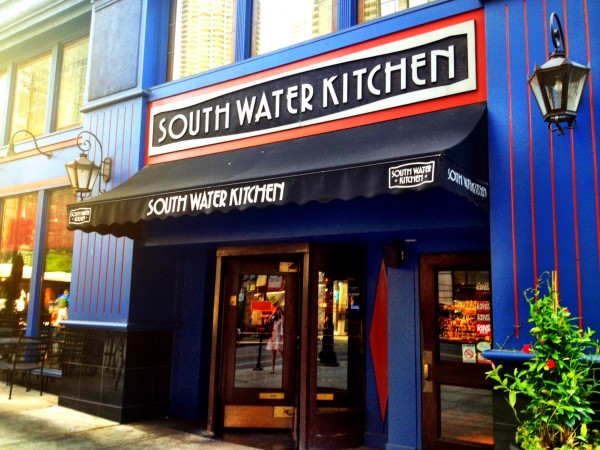
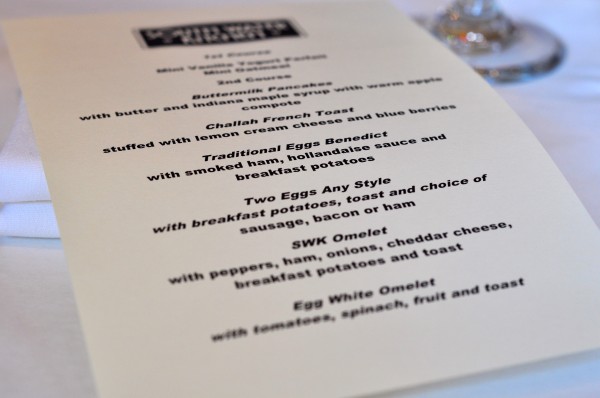

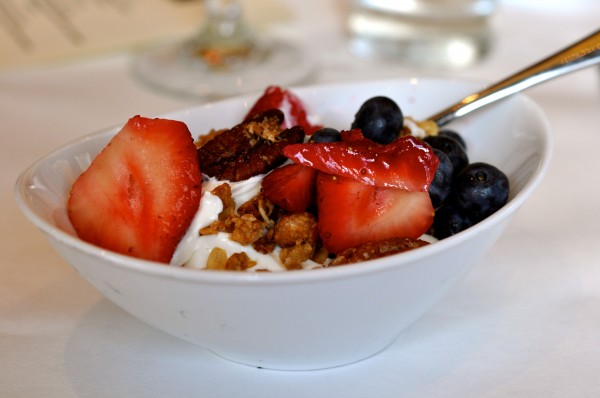
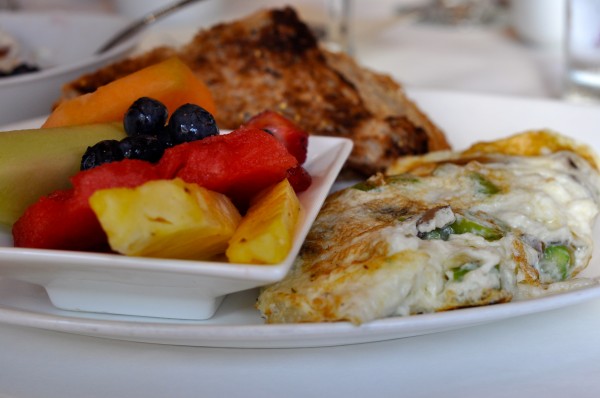

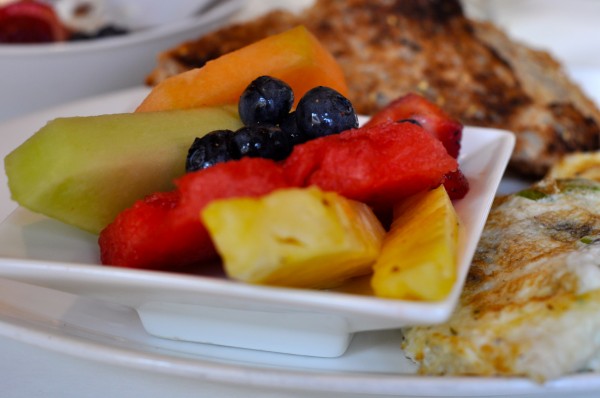






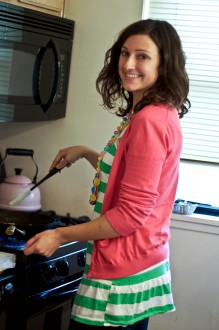


Thanks for taking the time to meet with us. I think you did a great job of capturing the sentiments of our group and am glad people are asking questions to open conversation. As long as we have consumers of the food we produce keeping an open mind to listen to those of us that produce it, then we will be better able to help share what we do on our farms. I know all of us would enjoy giving you and others a tour of our family operations and I would personally also welcome any other burning questions about what it is that we do. It definitely was a pleasure! Your photography is excellent by the way 😉 I didn’t even realize till seeing your blog how awesome our breakfast looked!
David Foster
Foster Dairy, Ft. Scott, KS
Thank YOU, David. I’m really glad to hear you enjoyed my post and that I was able to capture our discussion. I will definitely let you know if I ever am near Fort Scott. I have family in Kansas so hopefully it could happen sometime – I’d love a tour if you’re offering! Thanks for the kind comments on my photography, too. 🙂
Thanks for sharing a different perspective on the issue! I think that health food articles and activists often stress organic and local above all other products and consumers willingly buy in. Unfortunately, it’s not always feasible for farmers to be local or organic and in addition, those labels are not perfect and do not always translate to the healthiest and least processed food. I also love that farmers are treating their animals so well. Again, thanks for posting this!
I couldn’t have said it better, Lindsay! I’m so glad you enjoyed the post and agree with everything you mentioned.
Jenn, Thanks again for joining us for breakfast. I look forward to reading more of your blog and had to laugh when I saw that South Water Kitchen was where you had your bachelorette party. Take care and keep in touch. Vanessa
I definitely laughed about the coincidence, too! Looking forward to staying in touch, Vanessa – thanks!
I just can’t stop looking at the parfait 😉 You know I’m obsessed. I love the idea of finding great grass substitutes, rather than going straight to corn!
The parfait was so amazing! I loved the idea of the grass substitutes, too.
Interesting! Jim and I are planning on watching Food, Inc. tonight.
I’m excited to rent it now!
Interesting post! Growing up in a small town in Wisconsin, (in the midst of many farms) I’m aware there is a big difference between factory farms and other family farms, even if the family farms aren’t certified organic, or the meat isn’t 100% grass-fed. The meat market in my home town doesn’t advertise local, organic, etc., but when my mom asked where the meat was from, it all came from a 10 mile radius. I guess I’m not really sure where I’m going here, but sometimes it is better to learn more about farms before passing judgement. 🙂 A good lesson for life, right?
I completely understand what you mean – just because they don’t go through all the paperwork to get certified doesn’t mean it can’t be just as good in terms of quality and care for the animals, and I definitely found that to be true with these farmers. Learning more before passing judgment is a great life lesson, that’s for sure!
What a great opportunity jenn! I really love how you talked about them really knowing their animals and that pesticides aren’t used as rampantly as some might believe, ie me. Haha. I think it’s awesome to get to know the farmers from where our food comes from; the organic and local food box delivery service i used to use in .CA set up opportunities for us to keep the farmers all the time! I wish i had taken the time to do it!
Haha – I certainly believed it to before I talked with these farmers! It’s so cool to learn where our food comes from – the more I get the chance to do so, the better I feel about what I’m putting into my body. I love it!
Very interesting! These days there is such a heavy emphasis on buying/consuming organic/grass-fed/local meats (and foods in general), but many people don’t realize how expensive it is for farmers to become certified organic. Therefore, it’s so important for consumers to ask questions about the source of the meat/food – just because a farmer doesn’t advertise organic doesn’t mean that it’s not!
Exactly, Irina! I’ve heard that the process is very stringent and tough, not to mention expensive. So as long as we keep asking questions, it’s still possible to find quality meats and foods that don’t necessarily have the official labels.
These kinds of meetings/meals are going to be very important as we all go forward in the conversation about our food. Living out here next to the largest desert in North America (the Chihuahuan Desert) we don’t have the “local” choice for much of anything. Even if you have the water, the heat and low humidity prevent produce from being viable crops. It can take up to 20 acres of pasture for one cow out here…so equate that to how big you have to be to raise grass fed cattle! Local is nice when you have it, can afford it and want to take the time to get it. Out here, we eat what the trucks bring in!
Thank you so much for sharing your perspective, Suzie. I completely agree that these meetings and meals need to happen more often. If we all continue the conversation, it will lead to better understanding and respect on all sides! I look forward to reading more of your blog.
This is such an enlightening post, Jenn! The point about the milk situation is something I’d never considered, and love the idea of feeding cattle homegrown crops that are healthier for the animals.
The “local,” “organic,” “grass-fed,” etc. labels can sure be a draw, but this is all a great reminder that knowing your farmer–no matter how they are certified–can be extremely helpful when making your food choices!
Thank you, Karla! I wish there was a way for us to all easily know our farmers, no matter what town we live in. Hopefully through conversations such as these we can continue to build the awareness and make it a reality in the future!
Jenn–Just found your blog and love it! I am a beef producer and enjoyed this post very much. Conversations like this are so important for all of us–ranchers/farmers and those who want to know more about where our food comes from. If you ever come out West, I would love to have you visit our cattle ranch and meet my family!
Hi Kim! Thanks so much for stopping by – I’m looking forward to checking out your blog, too. I appreciate your comment and agree that these conversations are vital to our continued education – learning from one another is the best part! Thank you for the invite – I would love to meet your family and visit your ranch someday! 🙂
Jenn,
I so enjoyed our visit in Chicago. Not only is it important for consumers to understand farmers, but it is also good for farmers to understand what is important to the consumers of our products. We learned a lot through our visit with you. I know that I sometimes get tunnel vision about the challenges that we face in agriculture and overlook the gratification that can come from looking at a different perspective. Thanks for the input from the food bloggers.
For instance, it was pretty depressing to come home to Kansas and the dry fields trying to support life to our cotton plant, our soybeans and our grain sorghum. It makes me feel so helpless after doing all that we can to feed our plants and to preserve soil moisture. Then I remembered your gratification for our efforts in producing food and fiber. Thanks!